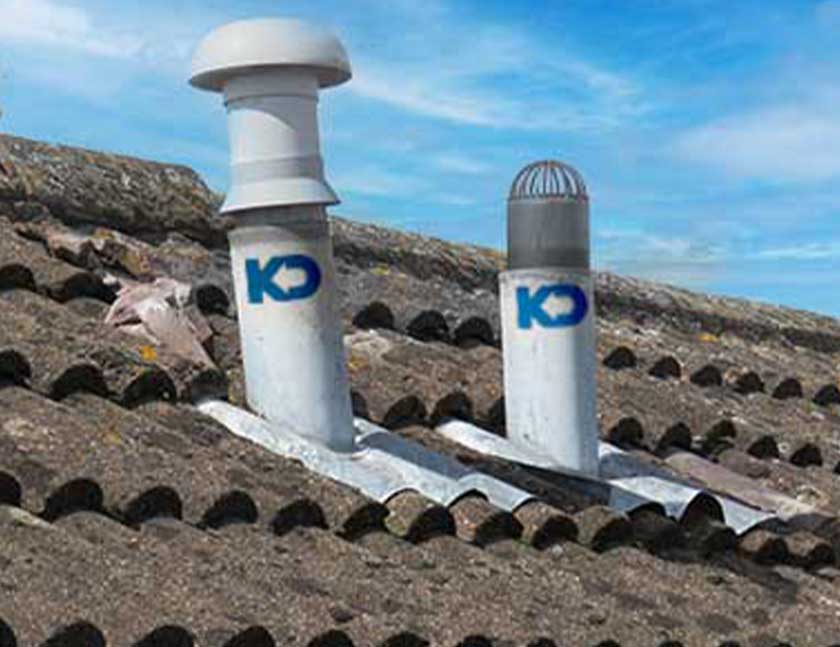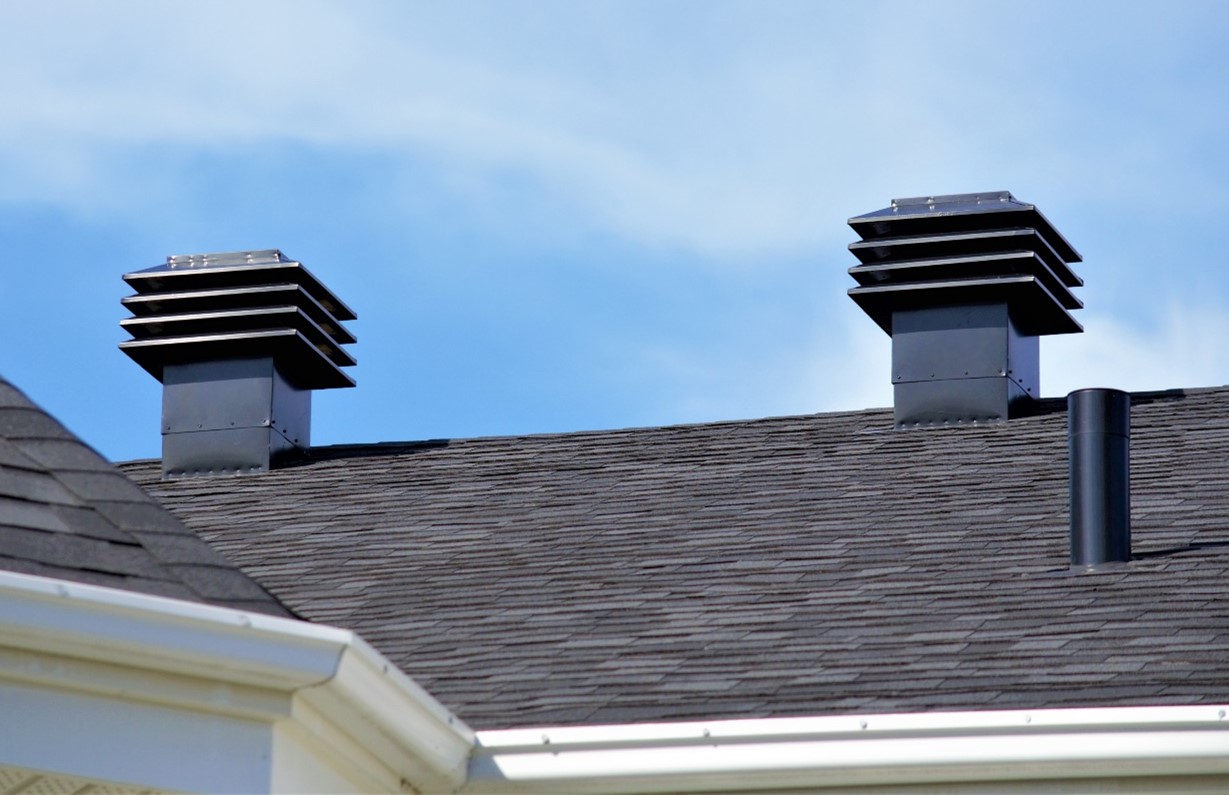Exploring The Value of Adequate Ventilation in Plumbing Systems
Exploring The Value of Adequate Ventilation in Plumbing Systems
Blog Article
The publisher is making several great pointers on What Are Plumbing Vents and Why Are They Important? in general in the article in the next paragraphs.

Appropriate air flow in plumbing systems is frequently ignored, yet it is critical for preserving the functionality and security of your home's plumbing. Air flow helps regulate atmospheric pressure, avoid the buildup of hazardous gases, and make sure the reliable removal of waste. In this guide, we will discover the relevance of correct plumbing air flow, how it functions, and the advantages it offers your pipes system.
Comprehending Air Flow in Plumbing
Ventilation in pipes describes the network of pipes that allow air to flow through the drainage system. These vents offer several functions, including managing atmospheric pressure within the pipelines, preventing sewer gases from going into the home, and assisting in the smooth flow of wastewater.
Just How Air Flow Functions in Pipes Equipments
Atmospheric Pressure Law
Proper ventilation maintains well balanced air pressure within the plumbing system. When water flows through pipelines, it displaces air. Without ample ventilation, this variation can produce unfavorable pressure, resulting in slow down drains or siphoning of water from catches, which can trigger undesirable odors to leak into the home.
Protecting Against Sewage System Gas Accumulation
Among the most crucial functions of plumbing vents is to prevent drain gases, such as methane and hydrogen sulfide, from collecting within the home. These gases can pose major wellness threats and are extremely combustible. Vent pipes enable these gases to get away safely outside.
Aiding in Waste Removal
Air flow assists in the reliable removal of wastewater by avoiding airlocks in the water drainage system. When air can flow freely through the vents, it allows water and waste to flow efficiently with the pipelines, decreasing the danger of obstructions and backups.
Types of Plumbing Vents
Main Heap Vent
The primary stack air vent, also referred to as the vent pile, is the primary air vent in a plumbing system. It extends from the major drainpipe align with the roof covering, allowing gases to leave and fresh air to go into the system.
Branch Vent
Branch vents connect to the primary pile air vent and offer specific fixtures, such as sinks, bathrooms, and showers. These vents make sure that each fixture has sufficient air flow to function effectively.
Air Admission Valve (AAV).
An Air Admission Shutoff (AAV) is a one-way shutoff that enables air to go into the pipes system without the need for a typical vent pipeline expanding with the roof covering. AAVs are generally used in improvements or locations where setting up a common vent is not practical.
Indicators of Poor Air Flow in Plumbing.
Slow Draining Fixtures.
If your sinks, bathtubs, or bathrooms are draining slowly, maybe an indication of poor ventilation. Insufficient air circulation can create a vacuum result, making it difficult for water to drain appropriately.
Gurgling Sounds.
Gurgling sounds originating from drains are often an outcome of air being sucked with water catches because of unfavorable pressure in the pipes. This is a clear indicator of not enough air flow.
Unpleasant Smells.
Sewer odors inside your home are a red flag that your pipes system is not effectively ventilated. This might imply that sewer gases are not being adequately vented outside, causing possibly harmful conditions.
Typical Air Flow Mistakes.
Insufficient Vent Sizing.
Making use of undersized vent pipelines can lead to poor air flow and pressure imbalances in the system. It's necessary to use vents that meet the details requirements of your pipes system.
Improper Vent Positioning.
Placing vents too far from the components they serve can decrease their efficiency. Proper placement makes sure that air can stream easily and effectively through the system.
Ignoring Code Demands.
Building regulations supply specific standards for plumbing air flow. Ignoring these codes can cause a system that falls short to function appropriately and might lead to costly repairs or carcinogen.
Advantages of Correct Ventilation.
Enhanced System Efficiency.
Appropriately aerated plumbing systems run more efficiently, with less clogs, faster draining pipes, and much less stress on the pipes. This effectiveness expands the life-span of the plumbing system.
Improved Air Top Quality.
By avoiding sewage system gases from entering your home, proper ventilation contributes to better interior air top quality, making your living atmosphere healthier and a lot more comfy.
Protecting Against Water Damage.
Sufficient air flow helps prevent water from being siphoned out of catches, which can bring about sewer gases getting in the home and causing water damage over time.
Steps to Make Sure Correct Ventilation.
Consulting Pipes Codes.
Always consult local pipes codes when designing or customizing your pipes system. These codes offer the necessary standards for appropriate venting and guarantee your system fulfills security standards.
Regular Examination and Maintenance.
Regular inspections can aid determine prospective ventilation issues before they come to be major troubles. Upkeep tasks, such as cleansing vent pipelines and checking for clogs, are necessary for keeping the system in good working order.
Expert Installation.
For new installations or major alterations, it's smart to work with an expert plumbing technician. They have the proficiency to make sure the ventilation system is properly designed and mounted according to code.
Final thought.
Correct ventilation is a vital element of any type of plumbing system, making sure that it functions successfully and safely. By understanding the importance of ventilation, identifying the signs of bad air flow, and taking actions to maintain your system, you can prevent expensive issues and safeguard your home's air quality.
4 Things You Should Know About Your Plumbing Vents
What Plumbing Vents Are
Also called a vent stack, a plumbing vent is a vertical pipe attached to your drain line that runs through your roof. The plumbing vent pipe, or plumbing air vent, removes gas and odors from your plumbing system and allows fresh air to enter the pipes, helping the water to flow out of the drain pipes.
What Plumbing Vents Do
Plumbing vents have two basic functions. One of which is to allow unpleasant smelling wastewater and sewer gasses to escape your plumbing system instead of entering your home. Plumbing vent pipes are typically located on roofs, away from windows, to ensure the fumes exit the home completely.
The other function of the plumbing vent is to move fresh air into your plumbing system. This helps move water through every plumbing fixture in your house, like toilets and sink drains. Think of the way in which you need to let a little air into the bottle as you pour soda in order to make the drink flow smoothly.
Different Types of Plumbing Vents
True vent: This is the most common vent option. In simplest terms, a true vent is a vertical pipe attached to your drain line that exits through the roof. They often function as the main vent that other fixtures can connect to. Re-vent pipe or auxiliary vent: Attached to the drain line near specific plumbing fixtures, re-vent pipes run up and over to connect to the main vent. Common vent: Two plumbing fixtures installed on opposite sides of a wall are typically tied into the vent stack using something known as a sanitary cross. Wet vent: This venting option operates as a drain pipe and a vent at the same time. Wet vent drainage systems drain water from one fixture while venting the air from another. Although they’ve been used for over 100 years, wet vent systems have only recently been added to the plumbing code in many areas. If you’re planning on installing one in a bathroom remodel, make sure you check your local code prior to construction. Loop vent: For free-standing fixtures like kitchen island sinks, loop vents are ideal. These vent pipes run under the floor, rise from the P-trap, and create a loop inside the cabinet sink. Air admittance valve: An AAV is a one-way mechanical valve typically installed at the site of the plumbing fixture. AAVs allow venting to occur without having to tie into a larger venting system. They’re ideal for venting fixtures where you aren’t able to easily connect to an existing vent system. Common Plumbing Vent Issues
Although vent pipes typically don’t have water flowing through them, they’re still subject to many typical plumbing issues. For example, clogs are one of the most common problems associated with sewer vent pipes. If your vent pipe gets clogged, all of your plumbing fixtures tied into the vent stack will be affected.
A sink with a slow drain that bubbles and gurgles or a strong sewage smell around your toilet are both indicators that your toilet vent pipe is clogged. Because most vent pipes exit through the roof, old leaves, twigs or even a bird’s nest could be clogging the pipe.
Clogs in your vent pipe system cause a buildup of negative pressure, meaning that water won’t be able to flow out of your home very well. It’s similar to putting your finger over the opening of a straw to trap water inside. When you remove your finger, the water is able to flow out of the straw.
If you suspect you have any blockage in your vent, make sure you have a professional come examine the situation. Left unchecked, a blocked air vent can lead to other costly repairs, like leaks and sediment buildup.
Under Pressure
Pipe vents are essential aspects of a home’s plumbing system. Owning a home means learning about all sorts of things you never put much thought into before. But by understanding as much as you can about the important systems of your home, you can keep those budgets intact and those anxiety levels low.
https://www.homeserve.com/en-us/blog/home-improvement/plumbing-vents/

I hope you enjoyed reading our section on Why Plumbing Air Vents Are Important. Many thanks for taking the time to read our post. Sharing is nice. One never knows, you will be helping someone out. We truly appreciate reading our article about What Are Plumbing Vents and Why Are They Important?.
Website Report this page